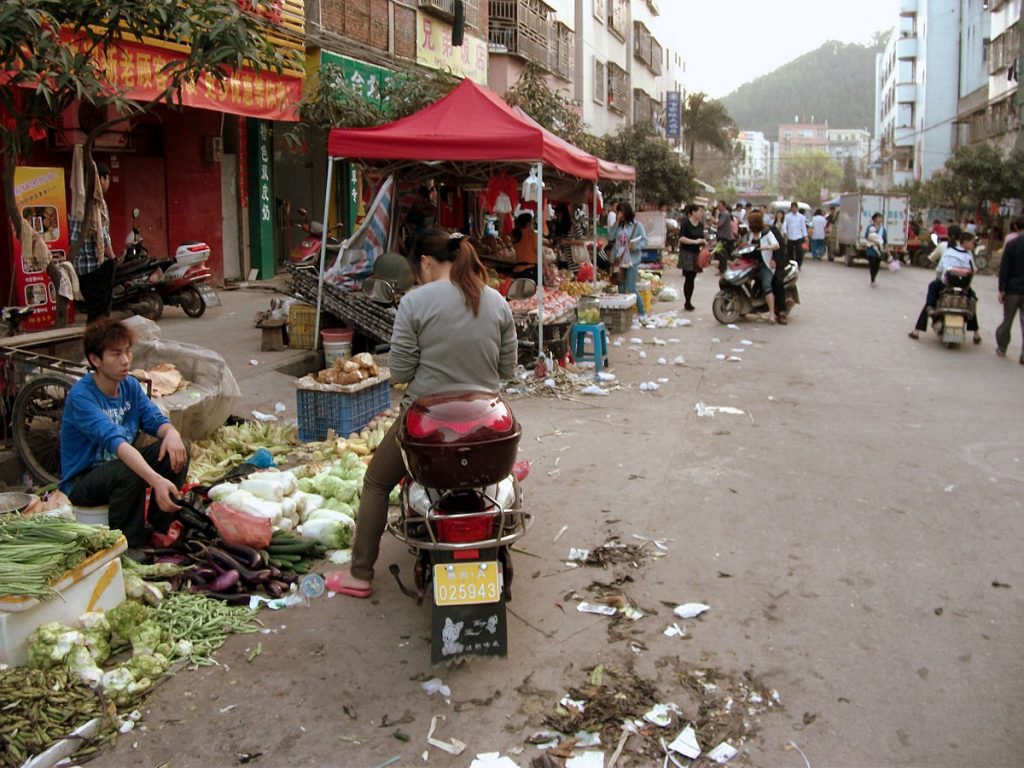Beijing: Huizhou city on the north of China’s flourishing Pearl River Delta has turned into a ghost town after Samsung closed its three-decade-old factory and shifted operations to India and Vietnam in October, in the first visible fallout of the ongoing trade war between China and the US.
The bustling city turned a ‘ghost town’ after Samsung closed its last smartphone factory in China, the Hong Kong-based South China Morning Post reported Wednesday.
Samsung relocated production to Vietnam and India in large part as a response to the trade war between the world’s two largest economies, it said, adding that the industry insiders consider that it reflected China’s changing position in the global supply chain.
Last year Samsung inaugurated its world’s largest mobile factory in Noida, near the Indian capital. The new facility will enable Samsung to double its capacity for mobile phones in Noida from 68 million units a year to 120 million units a year, in a phase-wise expansion to be completed by 2020.
China, regarded as the world’s factory, held a virtual monopoly over the global supply chain of manufacturing in the last three decades.
US President Donald Trump launched the trade war with China last year demanding Beijing to reduce the massive trade deficit.
Trump is also demanding an intrusive verification mechanism to supervise Beijing’s promise to protect intellectual property rights (IPR) technology transfer and more access to American goods to Chinese markets.
While the two countries held several rounds of talks to end the trade war, the conflict, however, left a trail of devastation for the Chinese manufacturing industry which was badly hit by the economic slowdown and steady fall of exports in the last few years.
Many of the employees who were forced to leave the Huizhou city factory commented on social media that they had left unwillingly, with some sharing photos of the latest smartphones and watches they had been given as part of their redundancy packages, the Post said.
With no new manufacturer in sight to take up the huge space left by Samsung factory, at least 60 per cent of the nearby businesses have already been closed, with more to follow in the coming weeks if the situation does not change, it said.
“Samsung is the world’s leading manufacturing enterprise. Its Huizhou factory had built an entire ecosystem of supply chains in Guangdong and nearby provinces in the past 20 years,” said Liu Kaiming, head of the Institute of Contemporary Observation, which supervises working conditions in hundreds of factories in China.
“At least 100 factories in Guangdong are going to close down. They can’t make it without the Samsung’s Huizhou factory, let alone those small shops and restaurants in the surrounding area,” he told the Post.
The impact of the closure also stretches as far as the town of Changan in Dongguan city, some 100-km west of Huizhou, where thousands of migrant workers and executives of a factory once owned by the Shenzhen-listed Janus Intelligent Group, a leading Chinese robotics company, have had their hours significantly reduced.
“Local consumer spending has got worse and is dying,” said Li Hua, a convenience store owner. “Our business has seen at least an 80 per cent drop compared to August. A large number of workers left from September.”
“Every store here – pharmacies, supermarkets, restaurants, convenience stores, internet cafes, rental houses, hotels and even adult stores – which one did not count on consumption of Samsung employees and workers?” he said.
The Huizhou factory started life in August 1992, after the South Korean electronics giant signed a joint venture contract with the local government.
A year later, the company with a registered capital of USD 32 million was officially put into production, and since then has produced the latest and most popular consumer electronics, from stereos in 1990s, MP3 players in early 2000s and smartphones since 2007.
“There are about 100 local residential buildings, six to seven floors, around 1,000 square metres, in Jinxinda complex; most were leased to Samsung workers,” said Huang Fumin, a sales manager from Huizhou Star Real Estate Broker.
“As soon as the Samsung factory closed, the price immediately dropped from 4.8 million yuan [USD 680,000] in August to 3.8 million yuan [USD 540,000], and still none of the investors are interested at this price,” he said.
In its heyday in 2011, with Samsung’s smartphone sales ranked No 1 in the world, its two factories in Huizhou and Tianjin produced and exported 70.14 million and 55.64 million mobile phones respectively.
According to Huizhou customs data, in October, the first month after the Samsung factory closed on October 3, exports from the city’s enterprises dropped to 14 billion yuan (USD two billion), a year-on-year decline of 27 per cent, the report said.
(PTI)
